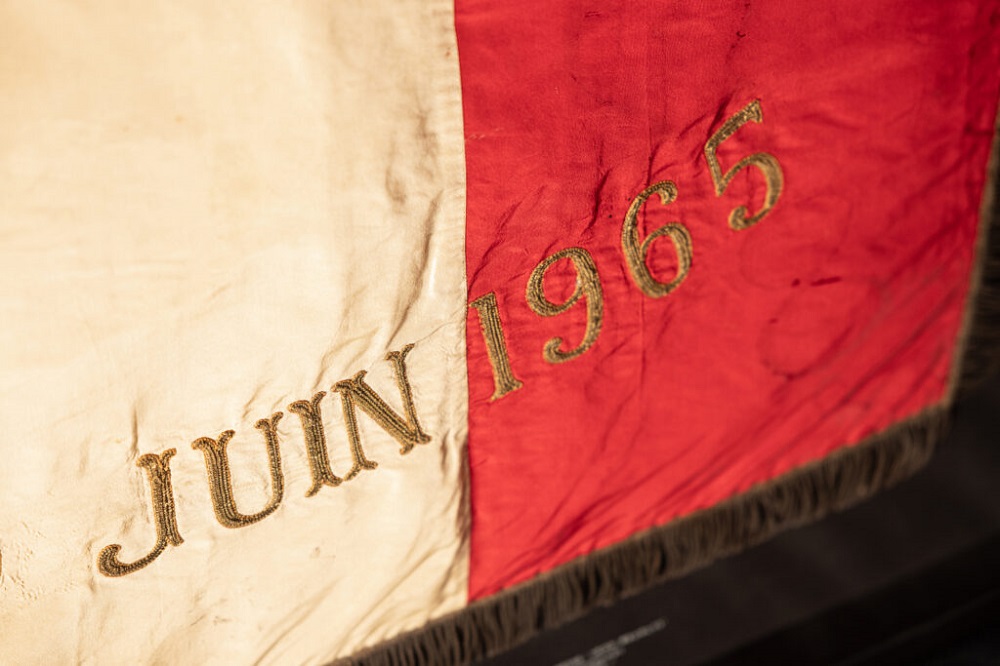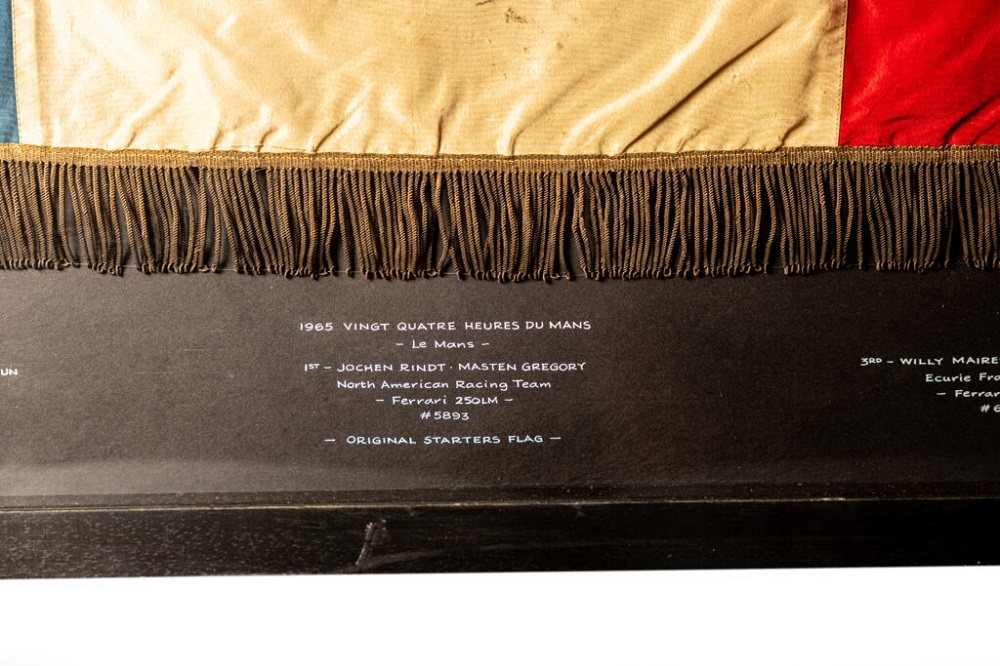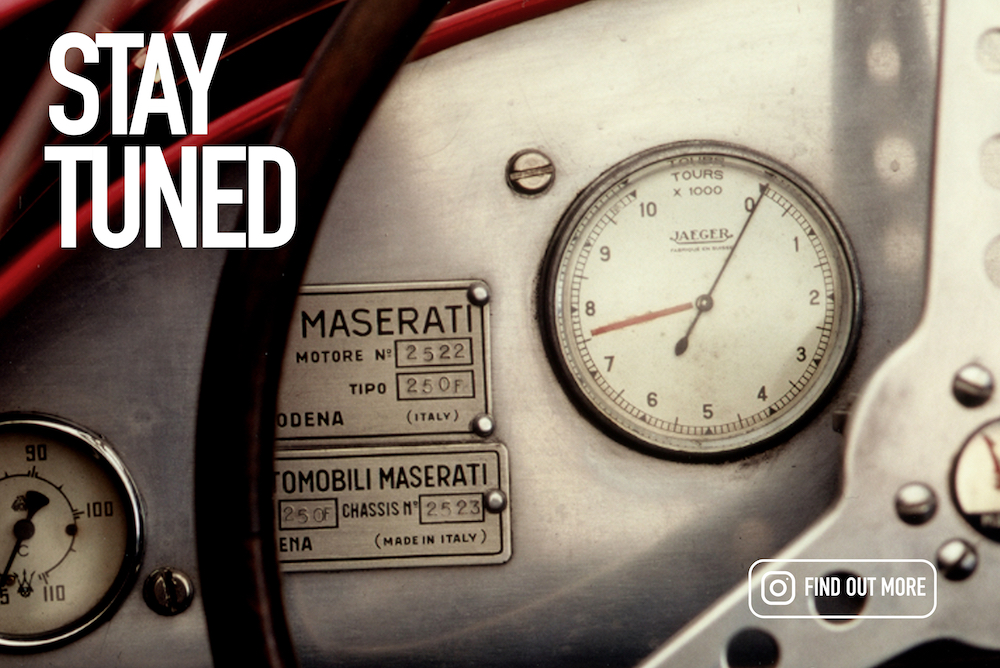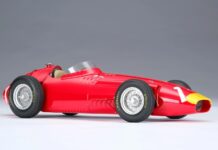This year’s running of the 24 Hours of Le Mans was the most exciting in years for a host of reasons. One of them was that for the first time since 1965, the car at the front of the pack on Sunday afternoon was a Ferrari.

Speaking of 1965, that was an incredibly captivating edition of the French endurance classic, too, and the gold-embroidered tricolore French flag used to start it just sold for a head-snapping €396,000 ($425,660). Offered at the RM Sotheby’s auction held on the eve of this year’s Le Mans race, this fringy piece of old cloth is now one of the most expensive pieces of automobilia ever sold. It even sold for more than four actual cars (a 1983 Rondeau, a 2000 Porsche 911 GT3, a 1993 Venturi, and a 2005 Spyker) offered at the same auction, and those were cars that actually raced at Le Mans. You could almost buy a brand-new Ferrari 812 GTS or a pair of Romas for that money.

But history counts for a lot, and ’65 was a wild and important year. Held right in the heat of the Ford v Ferrari era, the 1965 Le Mans race was the first one broadcast live on American television. For the first time since 1957 a non-factory team won the race, and Goodyear rubber took its first major international race victory. A jet turbine-powered car finished in the top 10, and there’s a legend about a “ghost driver” doing a stint in the winning car. A Ferrari won Le Mans for the sixth time in a row (a streak only bested by Porsche, with seven wins from 1981-87), and for the final time until 2023.
For the race, 51 cars lined up to start. Nearly half of them had either Ford or Ferrari power as the two companies were in the midst of their on-track international slugfest. Ferrari brought its latest P2 series of prototypes, while private teams ran older 250 LMs and the new 275 GTBs represented Maranello in the GT class. Ford, meanwhile, was riding high from a win at Daytona and had improved GT40s with both 7.0- and 4.7-liter power, while Cobra Daytona Coupes took the fight to the 275 GTBs.
Le Mans begins not with the traditional green flag used everywhere else but with a gold-embroidered French flag, and typically someone notable dips the tricolore to set the cars off on their 24-hour chase. In 2023, Lebron James started the race for some reason. In 1965, it was the slightly less famous Maurice Herzog, France’s then-Under-Secretary of State for Youth and Sports.

All eyes were set to see whether Ford or Ferrari would win the world’s most important sports car race, but in a way, they both lost. The GT40s got off to a blistering start, but by the third hour things started to go wrong, and by seven hours in all of the GT40s were out of the race. Head gasket problems plagued the Cobra Daytonas, and in the end only one Ford-powered car finished the race, in eighth.
The Ferrari P2s, meanwhile, were running but kept cracking their brake discs and lost tons of time in the pits to fix them. With the factory teams out of the running, it was up to the private racers. The 250LMs of French privateer Pierre Dumay and Luigi Chinetti’s North American Racing Team (NART) were running reliably and comfortably in first and second. Dumay’s car ran on Dunlop tires, with whom Ferrari had an official relationship. Chinetti’s car ran on Goodyears. Despite requests from Enzo to slow down and give Dunlop the win, Chinetti just ordered his drivers—”Kansas City Flash” Masten Gregory and future F1 champion Jochen Rindt—to go faster.
Ironically, the French car blew one of its Dunlop tires on the Mulsanne straight, which gave the NART car a lead it never gave up. Dumay’s 250LM finished second, and a 275 GTB finished third. Porsche 904s, other Ferrari prototypes, a Cobra, an Iso Grifo and the Rover-BRM turbine car rounded out the top 10. There were just 14 finishers. Legend has it that at some point Masten Gregory’s trademark glasses fogged up enough that he couldn’t drive and that Rindt was nowhere to be found, so backup driver Ed Hugus stepped up to drive the car for a stint, but this has never been proven.

According to RM Sotheby’s, the starter flag was given to Jacques Maury, the mayor of Le Mans, after the race and stayed with his family until going to a collector about 10 years ago.
Just as the flag started an exciting race, it was also the first lot of an exciting auction that saw €20M in total sales and seven Le Mans veteran race cars sell for over €1M each. Bidding on the flag was slow but steady, going in €5K increments between someone in the room and someone on the phone, both Ferrari fans, surely. It took 14 minutes of back and forth before the underbidder finally bowed out. That the new Ferrari 499P won this past Sunday seemed like some poetic justice for that crazy price.
We’ve been picking a Sale of the Week each and every week for over two years now. Naturally, we’re looking for cars, or maybe the occasional truck, and one time we picked a motorcycle. Meanwhile, automobilia, garage art, or whatever you choose to call these accessories is not in our price guide and it doesn’t often make headlines. But it is a huge ancillary piece of the collector car hobby, and results like this remind us to pay attention. $460,000 neon dealership signs, $210K slot-car tracks, and now $425K French flags are all out there, and people pursue them with the same passion as their cars.
By the way, if you think $425K for a flag is wild, the most expensive flag ever sold at auction is a Revolutionary War era American flag that sold for $12.3M back in 2006.
Report by Andrew Newton
If you are interested in more news click here.










